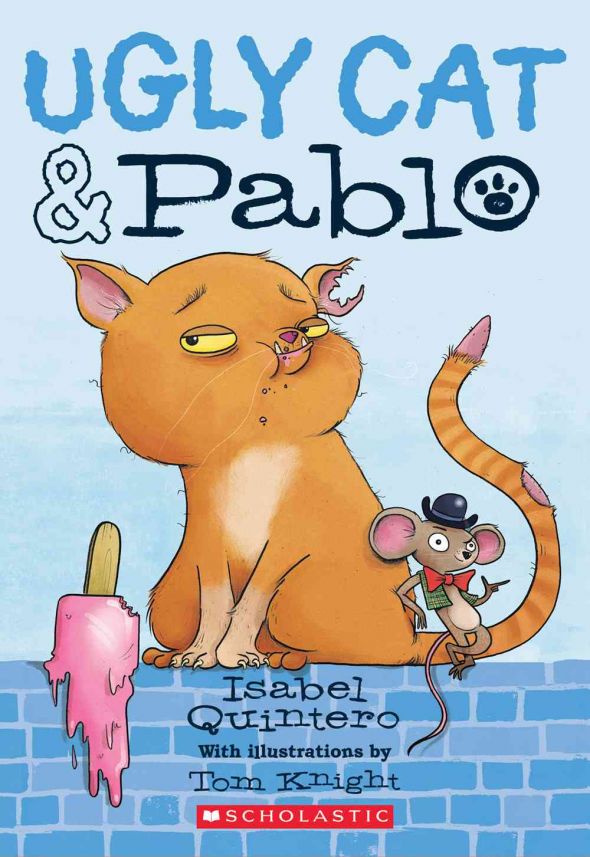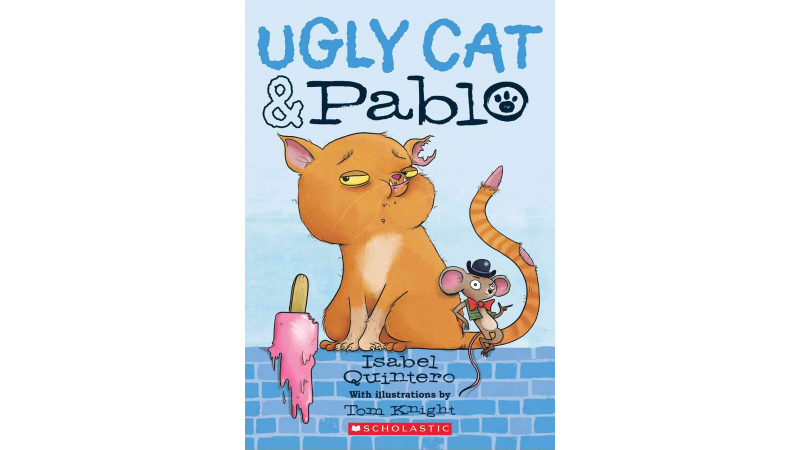 #WeHaveDiverseBooks: 5 Questions is a spotlight on OOM dedicated to exploring Scholastic’s amazing distinct voices. We’ll take a deep dive into the backgrounds, inspiration and works of these authors and illustrators.
#WeHaveDiverseBooks: 5 Questions is a spotlight on OOM dedicated to exploring Scholastic’s amazing distinct voices. We’ll take a deep dive into the backgrounds, inspiration and works of these authors and illustrators.
-----
Tell us a little bit about your background and yourself as a child.
I am the daughter of Mexican immigrants. When I was little my parents worked a lot, and so from about one month to junior high age, my abuelitos helped raised me. Now, they weren’t my real abuelitos but just a nice elderly couple who helped my parents out. When I wrote my new series Ugly Cat & Pablo I thought about the neighborhood I was raised in in Corona, California. There was a park nearby, a place to buy raspados (snow cones), and of course paleteros who supplied paletas (popsicles) during the hot days of summer.
When did you decide you were going to become a writer? How did this decision come to be?
I had always been a writer but decided to take my writing seriously in college after I failed as a high school English teacher. I decided to take a couple of creative writing courses and in those two workshops, I learned how to be disciplined, how to revise, and how to actually see myself as a writer.
You mentioned your new series Ugly Cat & Pablo, which is now available wherever books are sold. Tell us about the series and what makes it and these characters special.
Well, Ugly Cat and Pabloare best friends, and they like to get into mischief and that mischief usually involves food. These characters are Chicanos, and they speak Spanglish, Spanish, and English, and are funny (at least I think so, but I’m biased). I guess that’s special, the code-switching in a children’s chapter book, and the unapologetic love of food, especially paletas and other sweets.
Tell us more about the code switching, or the practice of alternating between two or more languages or types of languages, in the series. Why is it important to you to have Ugly and Pablo use Spanish to communicate their emotions and further the story’s plot?
It’s important for readers to see themselves in what they read, and a lot of children in the U.S speak the same language as Ugly Cat and Pablo. The same language as me. I think that to ignore or omit Spanish, is to ignore and omit these children, and the linguistic diversity that is part of this country.
Friendship and humor seem to be at the center of Ugly Cat & Pablo. Can you talk a little bit about the role you think humor plays in books for children?
I was an elementary school library technician for about six years and during that time I realized that children really liked funny books—like a whole lot. When I would do read-alouds, the books I always chose, which ended up being the most popular, were the funny books. I think books that make children laugh form a connection between feeling good and reading. If you laugh and feel good while reading a book, when you remember the book you'll remember feeling good, and then you’ll associate feeling good with reading. That’s important, especially for young children who are just learning to read. Humor in books emphasizes the “pleasure” in “reading for pleasure”—and that is crucial in fueling lifelong learners.





